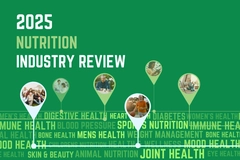
- Industry news
Industry news
- Category news
- Reports
- Key trends
- Multimedia
Multimedia
- Journal
- Events
- Suppliers
Suppliers
- Home
- Industry news
Industry news
- Category news
- Reports
- Key trends
- Multimedia
Multimedia
- Events
- Suppliers
Suppliers
High Nutrient Peanut Snacks Help Overweight Kids Eat Less

In the United States, 34% of children and adolescents are overweight or obese, with the Hispanic population experiencing the highest risk. Weight-loss interventions in this population have been largely unsuccessful.
28 Oct 2009 --- New data presented at the Obesity Society 27th Annual Meeting, shows that overweight adolescents ate fewer times per day and were not as hungry when they were taught how to make healthier food choices and snack on a nutrient-rich, satiating snack of peanuts or peanut butter. These changes were also related to reduced weights at six months. This study group, which received nutrition education, a snack intervention, and physical activity, experienced these benefits, whereas the comparison group that received only physical activity did not.
In the United States, 34% of children and adolescents are overweight or obese, with the Hispanic population experiencing the highest risk. Weight-loss interventions in this population have been largely unsuccessful. Eating episodes are on the rise and frequent snacking on nutrient-poor foods has been identified as contributing to excess calorie intake. Thus, this study targeted frequent snacking and the number of eating episodes as part of the intervention.
Participants in the study were Hispanic middle school children who were part of a larger weight loss study funded by the United States Department of Agriculture-Agricultural Research Service (USDA-ARS).
Previous studies have shown that peanuts and peanut butter can keep you full longer than high carbohydrate snacks and can be helpful in weight management. These data are consistent with these findings and show that combining education with the provision of a healthy, satiating snack, such as peanuts, can be effective at normalizing adolescent eating patterns and impacting weight.











